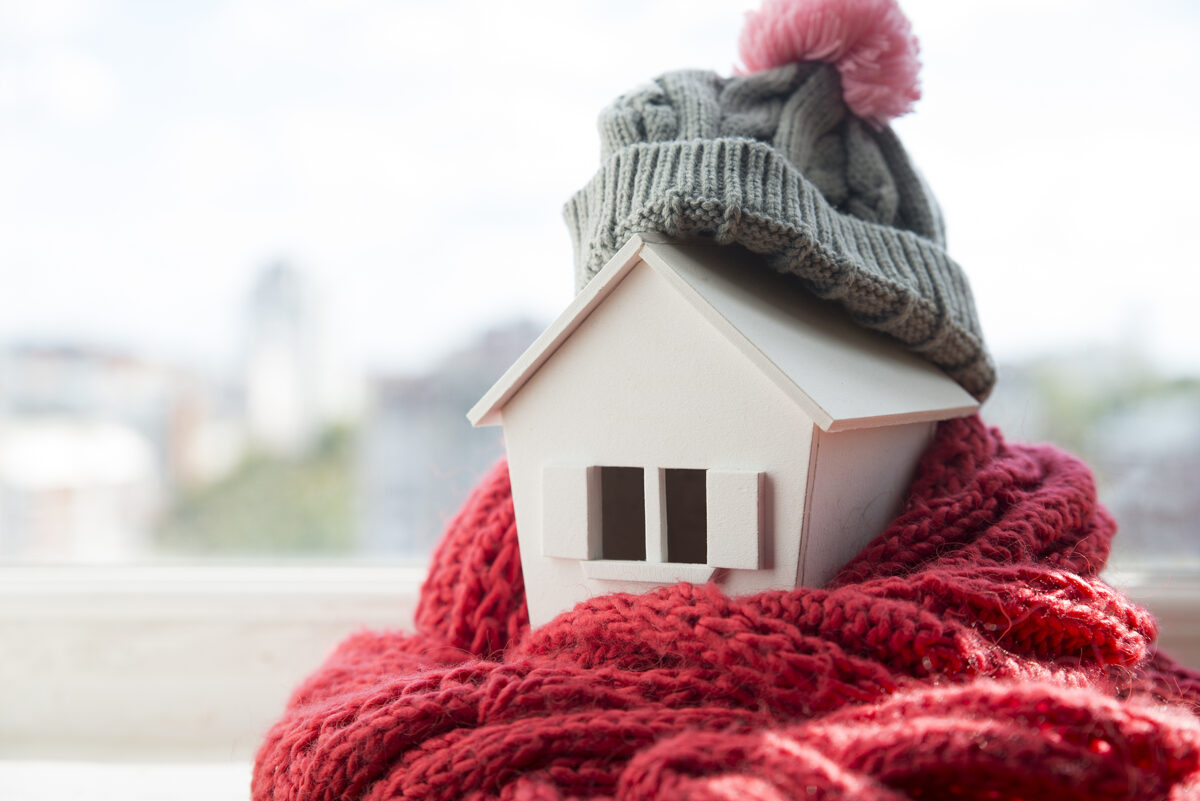Keep Walkways and Driveways Clear
The first thing potential buyers will notice when they arrive is how easy and safe it is to get to your front door. Winter weather often brings snow, ice, and slush, which can make walkways and driveways hazardous. Keep all paths clear of snow and ice by regularly shoveling and salting them. This not only makes your home safer but also shows buyers that your property is well-maintained.

If you’re expecting a showing, take the time to ensure the driveway is clear and easily accessible. Also, make sure the porch and entryways are clean and free from any debris or ice buildup. A clean, safe entryway sets the tone for a positive home tour.
Add a Splash of Seasonal Color
Winter doesn’t have to be dull and gray, and your home shouldn’t be either. Even in the colder months, there are plenty of ways to add a splash of color to your exterior. Consider using winter-hardy plants like evergreens, holly bushes, or even colorful potted arrangements. These can add a pop of color and life to your front yard, even when everything else is dormant.
Decorate with seasonal touches like a welcoming wreath on the front door or a few tasteful string lights around your porch. These small details can make your home feel more inviting to buyers as they arrive, giving it a warm and cozy vibe, even in cold weather.
Focus on Lighting
With shorter days and longer nights, lighting plays a critical role in enhancing your home’s winter curb appeal. Make sure your outdoor lighting is adequate and highlights the best features of your property. Pathway lights can help guide buyers to your front door while also adding an attractive element to your home’s exterior.
Consider adding soft lighting to your porch or entrance to create a welcoming atmosphere. Motion sensor lights are also a practical addition, ensuring that buyers feel safe and comfortable as they approach your home. Good lighting can dramatically enhance the look of your home and ensure it stands out, even on darker winter evenings.
Maintain Your Landscaping
Even though winter isn’t peak growing season, it’s still important to maintain your landscaping. Rake up any remaining leaves, trim back overgrown bushes, and remove any dead plants or debris. You can also add fresh mulch to garden beds to give them a neat, well-kept appearance.
 Incorporating winter-friendly plants like ornamental grasses or evergreens can add a bit of texture and color to your yard. If you have a lawn, keep it tidy by clearing away any fallen branches or debris after storms. A well-maintained yard shows buyers that you take pride in your home, no matter the season.
Incorporating winter-friendly plants like ornamental grasses or evergreens can add a bit of texture and color to your yard. If you have a lawn, keep it tidy by clearing away any fallen branches or debris after storms. A well-maintained yard shows buyers that you take pride in your home, no matter the season.
Highlight Your Home’s Best Features
Winter provides a unique opportunity to showcase features of your home that might not stand out in the summer. If your home has a cozy fireplace, make sure it’s prominently featured in your listing photos. If you have energy-efficient windows or a new roof that can stand up to winter weather, be sure to highlight these selling points. Buyers appreciate homes that are well-equipped for cold weather, so make the most of these features.
For homes with large windows, take advantage of natural light by keeping curtains open during showings. Clean windows thoroughly to make the most of the winter sunlight, which can make your home feel brighter and more spacious.
Make the Front Door a Focal Point
Your front door is often the first thing buyers will notice when they arrive, so it’s important to make it stand out. Give it a fresh coat of paint if it’s looking worn or outdated. Choose a color that complements the season and makes your home feel warm and inviting.
Adding a seasonal wreath or decorative doormat can give the entrance a personal, welcoming touch. This small but significant detail can make a big impact on a buyer’s first impression of your home.
Conclusion
Selling your home in the winter doesn’t have to be a challenge if you take the right steps to boost its curb appeal. From keeping pathways clear to adding welcoming touches of color, these small efforts can make a big difference in how buyers perceive your property. With shorter days and colder temperatures, focusing on things like lighting, landscaping, and your home’s best features will help you create a lasting, positive impression.
By embracing the season and making your home feel cozy and inviting, you’ll attract serious buyers who are ready to make a move—even in the colder months.



